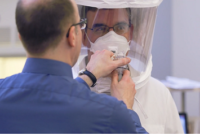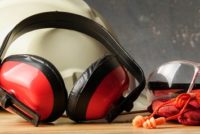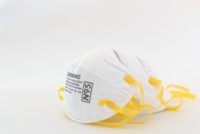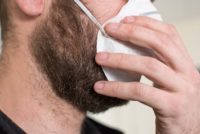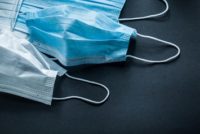Category: Personal Protective Equipment
No safety technology is changing as fast as that employed in PPE. The devices of just a few years ago are now obsolete by replacements that are lighter, easier to use, and more protective. These resources alert you to developments in the field, and equally important, supply training ideas to get your workers to use their PPE, and use it correctly.
Free Special Report: Does Your PPE Program Meet OSHA’s Requirements?
April 16, 2020 (Falls Church, VA)—As the COVID-19 pandemic spreads across the globe, so does misinformation on personal protective equipment (PPE), decontamination, and indoor air quality. These misunderstandings are putting healthcare workers and the general public at an even greater risk. The American Industrial Hygiene Association (AIHA) has launched a public education effort to provide […]
Personal protective equipment (PPE) is the last line of defense against hazards, and it has the potential to prevent injuries and save lives. But safety glasses can’t work when they’re perched on an employee’s forehead; a hard hat is useless if left sitting on the breakroom table; and what is the point of safety gloves […]
The Occupational Safety and Health Administration (OSHA) suggested that employers consider using filtering facepiece respirators certified under other countries’ standards in light of shortages of N95 respirators. The agency issued interim enforcement guidance to regional administrators and state-run occupational safety and health programs temporarily permitting their use.
Facial hair prevents employees from effectively wearing tight-fitting respirators. Experts at Safety.BLR.com® were recently asked who bears the responsibility for paying for alternate options, such as a Powered Air-Purifying Respirator (PAPR). There are both safety and human resources considerations—read on to see the answer.
This article was last updated and reposted on July 20 in accordance with more up-to-date guidance and links to additional resources. The world has changed in an unprecedented way since the onset of the COVID-19 pandemic, and employers have a lot of questions for our experts at Safety.BLR.com®. Read on to see how experts answered […]
The California Division of Occupational Safety and Health (Cal/OSHA) issued interim guidance requiring healthcare facilities to provide surgical masks during the COVID-19 pandemic when respirators are not available. The California Aerosol Transmissible Diseases (ATD) standard requires the use of respiratory protection for workers exposed to airborne infectious diseases.
The following is adapted from Rethinking Hand Safety. Some years ago, I was working with a major aerospace company, helping it pick out the right gloves for some of its manufacturing workers. We had done trials and convinced the line managers to go from a general-purpose glove to a cut-resistant glove. We had lots of […]
The ongoing coronavirus (COVID-19) pandemic has brought a renewed focus on personal protective equipment (PPE) for healthcare workers. COVID-19 is a respiratory disease caused by a novel coronavirus—referred to as 2019-nCOV or SARS-CoV-2—first identified in Wuhan City, China, in December 2019.
On March 14, the Occupational Safety and Health Administration (OSHA) issued temporary guidance regarding enforcement of annual respirator fit-testing requirements under the respiratory protection standard. The agency directed its field offices to exercise discretion to not cite an employer for violations of the annual fit testing requirement if the employer meets certain conditions.
On February 29, the Centers for Disease Control and Prevention (CDC) updated its strategy for optimizing the supply of N95 respirators for healthcare workers. The CDC also has developed and continues to update guidance for commercial airlines and shipping for handling known or suspected cases of COVID-19, the respiratory illness caused by the novel coronavirus […]

